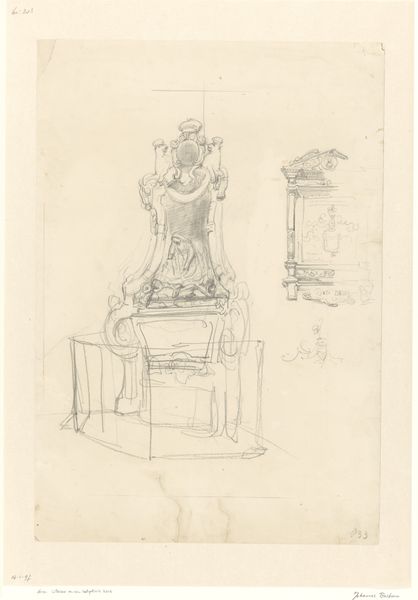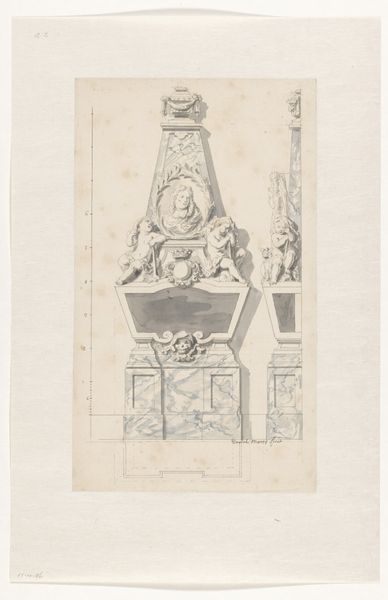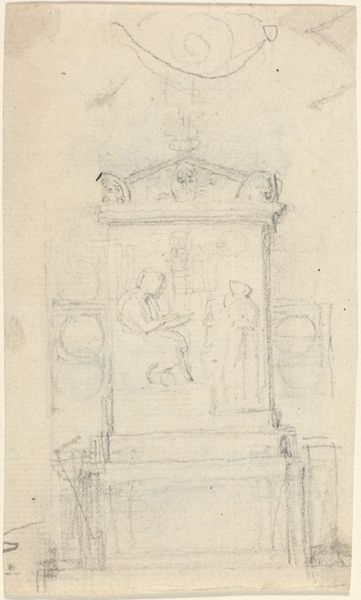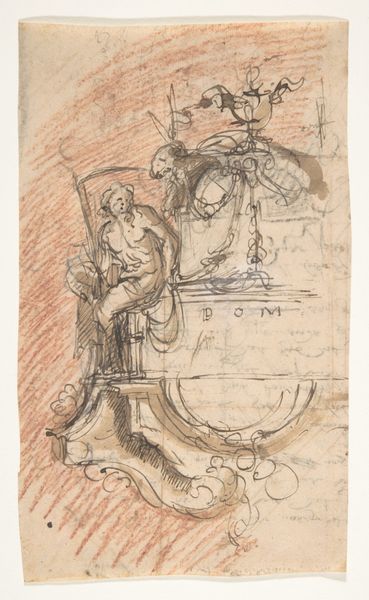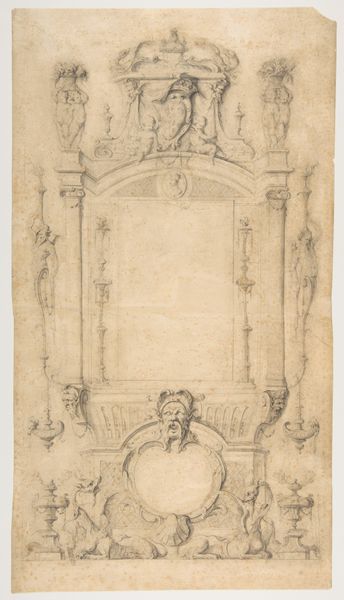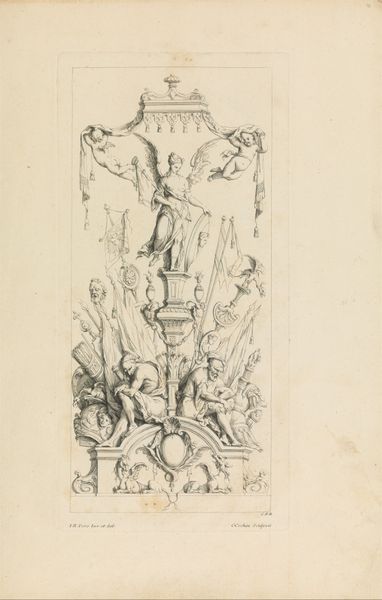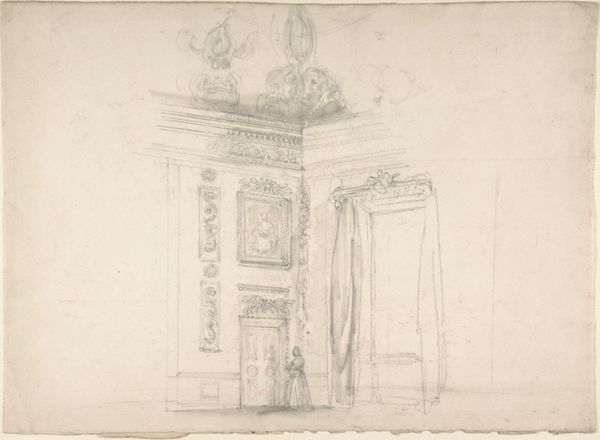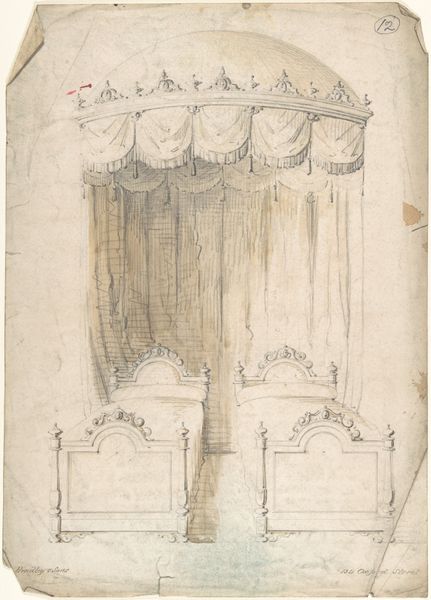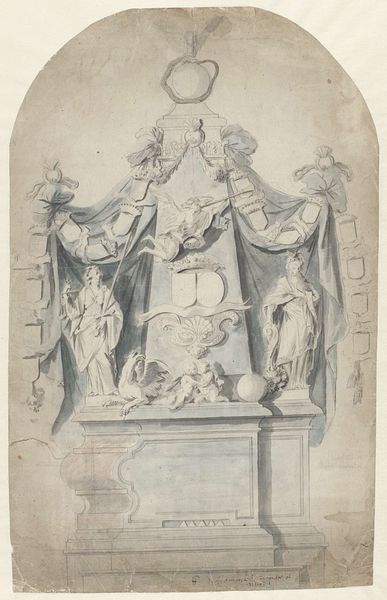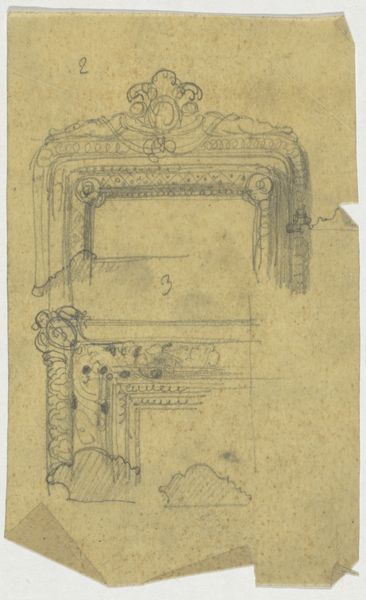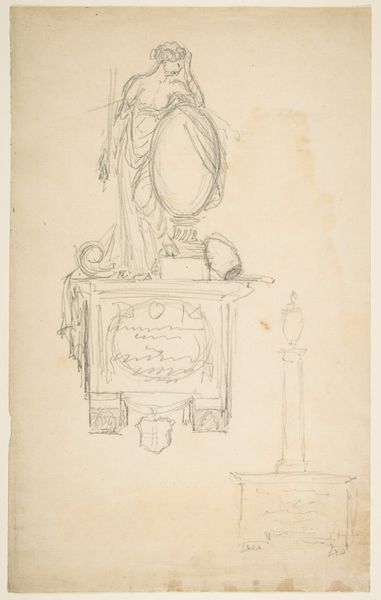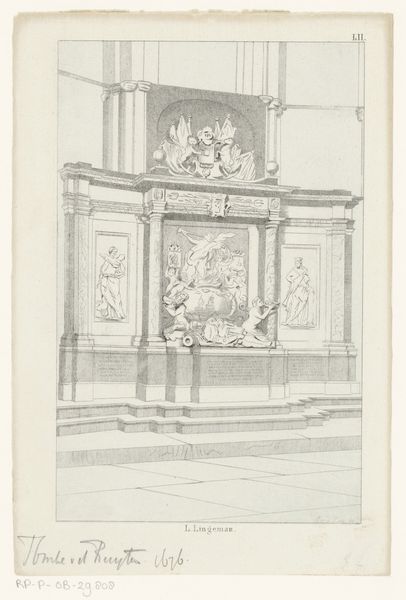
Design for a sepulchral monument in the form of a pulpit; verso: Fragment of a text 1686 - 1724
0:00
0:00
drawing, print, ink
#
drawing
#
baroque
# print
#
form
#
ink
#
history-painting
Dimensions: sheet: 8 x 5 7/8 in. (20.3 x 15 cm)
Copyright: Public Domain
Curator: We're looking at "Design for a sepulchral monument in the form of a pulpit" by Pieter Verbruggen the Younger, likely created between 1686 and 1724. It's an ink and print drawing currently held at the Metropolitan Museum of Art. Editor: The first thing that strikes me is how theatrical it is, a stage for contemplating mortality, rendered in washes of sepia ink. There's a strange drama being played out here. Curator: That's insightful. Verbruggen was working within a Baroque idiom, a style that loved dramatic presentation. Sepulchral monuments were often designed to inspire reflection on death, but also to showcase the family’s power and piety. Editor: And power certainly appears as part of the material production itself; designing something like this requires the time and labor of skilled artisans, costly pigments, suggesting someone is trying to control how their legacy will be crafted, down to the very line. Curator: The skulls are central symbolic devices, the memento mori, intended to remind the viewer of the transience of life and the omnipresence of death. Also notice the crucifix topping the composition; an icon of rebirth and faith over mortality and passing. Editor: Right, because there's the obvious question of whether such spectacle is about mourning and loss or constructing memory. Even the deliberate, if rough, crafting of the lines, is there something authentic in the labor that honors those lost or simply overwrites it? Curator: In that era, the creation of such monuments often fulfilled both needs: the very material expense served as testimony, literally, a statement for generations to come, designed to reinforce connections between ancestors and their kin. It also provided much needed employment during times of famine. Editor: It all certainly comes together. Even a relatively simple ink-wash design as this offers complex points for analysis if one pauses to think about who benefits from this commission, from its designers, craftsman, commissioners, consumers. Curator: Absolutely, I now recognize how the weight of historical context impacts not only its creation but also our understanding of its enduring visual motifs. Editor: Agreed, examining this drawing for the design illuminates larger themes on commemoration and craft itself; definitely something to carry with us.
Comments
No comments
Be the first to comment and join the conversation on the ultimate creative platform.
